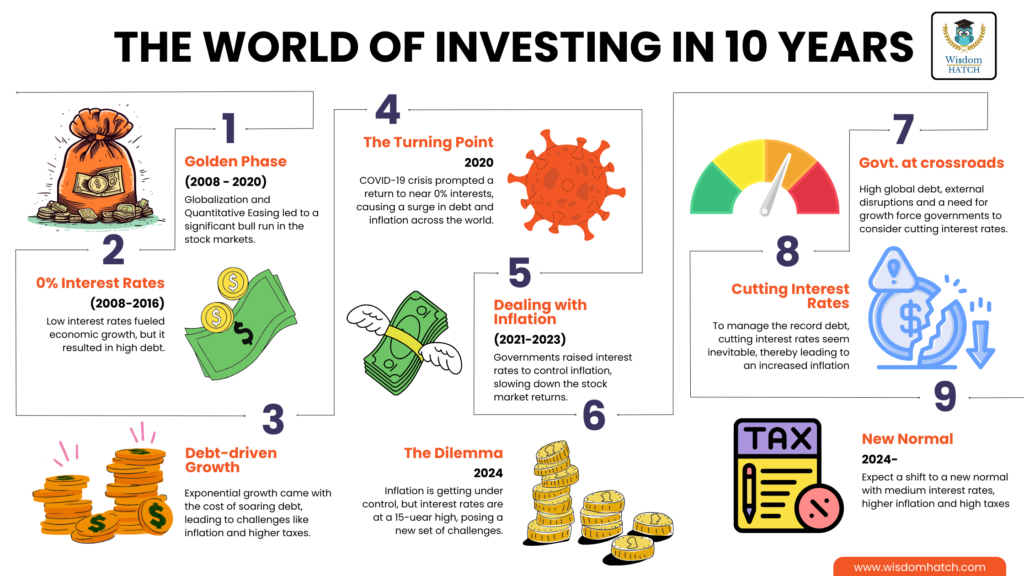How to Build a Startup Embarking on the journey of building a startup can be both exhilarating and intimidating. Shows like Shark Tank make the process look easy. You show your model You raise funds And you make a lot of money. But it’s important to recognize what works and what doesn’t. How to actually cultivate and nurture an idea. And that’s what we will cover. Building businesses that focus on: Profitability Value Fundamentals Drawing from my experience of launching multiple profitable ventures, including an Airbnb rental business in Goa, We have distilled a practical roadmap for aspiring entrepreneurs. In this blog, we will cover: Ideation: Generating and refining business ideas through brainstorming and strategic analysis. Choosing the Right Idea: Selecting a business concept aligned with your goals and resources. Narrowing Down the Idea: Conducting SWOT analysis to refine your chosen idea further. ROI Analysis: Maximizing Returns and Minimizing Risks Due Diligence: Understanding the importance of thorough research and compliance to mitigate risks. Building the Product: Developing a minimum viable product (MVP) to test your idea in the market. Distribution: Devising effective strategies for product distribution and customer acquisition. Scaling Up: Exploring opportunities for growth and expansion beyond the initial stages. Step 1: Ideation – Planting the Seed of Innovation Every successful startup begins with a spark of inspiration. The ideation phase is all about generating and refining ideas that have the potential to address a specific need or pain point in the market. Start by casting a wide net and brainstorming a diverse range of concepts. Whether it’s launching an ice cream shop or starting your own YouTube channel, explore every possibility. As a start, Jot down 30-40 ideas. How do you do this: a. Brainstorming Speak with a bunch of people. This could be through networking events or college/work groups. b. Storyboarding Envision a customer journey and find gaps that you can fill. c. Mind Mapping • This is the process of structuring your processes.• For eg: If you have a distribution problem for your book, you can break it down into either Building your own distribution Get outside help by paying extra Go to a publishing house This way you can identify a problem and find a solution for it. Step 2: Choosing the Right Idea: Aligning Passion with Profitability With a plethora of ideas at your disposal, the next step is to narrow down your options and select the idea that resonates most with your goals and aspirations. Consider factors such as your interests, expertise, and long-term vision for the business. Your business needs to fit with your goals. For eg: If your goals focus on: Offline Physical Business That requires less of your time The Airbnb space would make sense to you. You could: Buy a house And then list it online or Give it to a property manager This is not a push to try out the business, It’s more focused on showing you how to choose your type of business. Step 3: Narrowing Down the Idea: From Concept to Concrete Plan Once you’ve identified a promising idea, it’s time to flesh out your concept and develop a concrete plan of action. Conduct a SWOT analysis to evaluate the strengths, weaknesses, opportunities, and threats associated with each idea. Assess the market demand, competition landscape, and feasibility of execution. Ultimately, choose an idea that not only aligns with your passion but also demonstrates strong growth potential and market viability. Define your value proposition, target audience, and revenue model with precision. Taking the example of the Airbnb business: Once you have a property, your options are either to manage it on your own or lease/rent it out. This will purely depend on your situation. Step 4: ROI Analysis: Maximizing Returns and Minimizing Risks A crucial aspect of building a startup is conducting a comprehensive return on investment (ROI) analysis. This involves assessing the potential returns relative to the initial investment required to launch and operate the business. To perform an ROI analysis effectively, consider the following steps: Calculate Expenses: Determine the total cost of launching and operating your startup, including upfront investments, ongoing expenses, and overhead costs. This may encompass expenses such as operations, marketing, and personnel. Estimate Returns: Project the potential revenue streams and returns generated by your startup over a specified time frame. This may include revenue from product sales, subscription fees, advertising, and other sources of income. Use realistic assumptions and conservative estimates to account for uncertainties and fluctuations in the market. Determine ROI: Calculate the ROI by dividing the net profit (total returns minus total expenses) by the total investment. This will yield a percentage that represents the return on each rupee invested in the startup. Aim for an ROI that exceeds your minimum threshold for profitability and justifies the risks associated with the venture. For eg: In the Airbnb business, you need to calculate: 1. How much expense you will incur: Property Cost Maintenance Charges Renovations etc. 2. How much Return that I can expect: Work with the worst-case assumption Follow a 4% yield rule as a threshold Ie: For a 2Cr villa, I should make at least 8 lakhs a year. Now, if you are setting up an online business, your focus should be on the time investment. If you are taking debt to start your business, ensure that your ROI makes sense. Conducting an ROI analysis enables you to maximize returns and minimize risks, ultimately enhancing the long-term viability and sustainability of your startup. Step 5: Due Diligence: Mitigating Risks and Ensuring Compliance Before diving headfirst into your startup venture, it’s essential to conduct due diligence to mitigate risks. ensure regulatory compliance and protect your downside. Research local laws, regulations, and industry standards relevant to your business niche. In the case of Airbnb business, conducted extensive research on Societal laws, Licensing requirements to avoid potential legal pitfalls. How does this Due Diligence apply to you? This could be: Rules and Regulations in your business space GST Registration Again,












